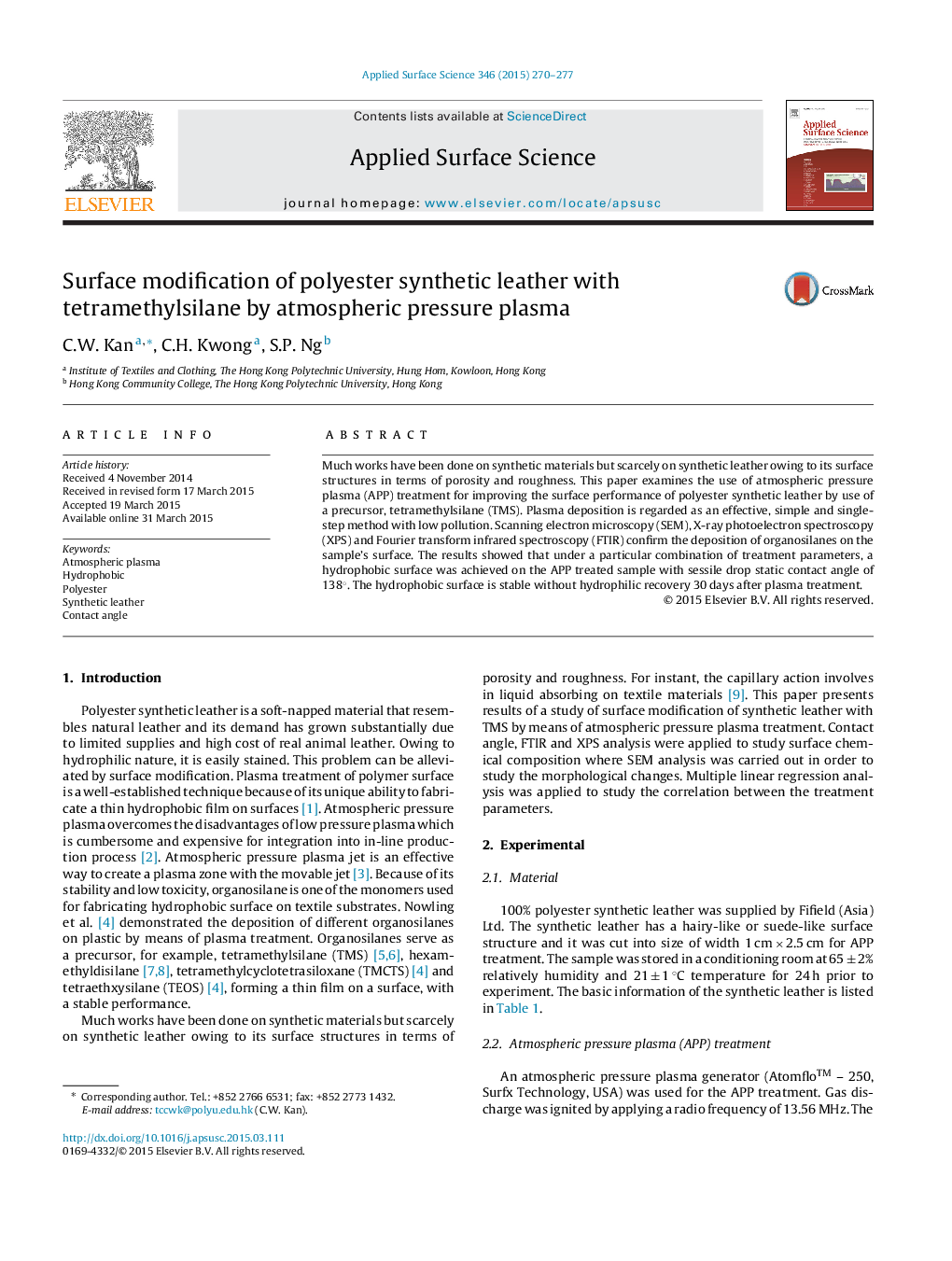| Article ID | Journal | Published Year | Pages | File Type |
|---|---|---|---|---|
| 5354832 | Applied Surface Science | 2015 | 8 Pages |
Abstract
Much works have been done on synthetic materials but scarcely on synthetic leather owing to its surface structures in terms of porosity and roughness. This paper examines the use of atmospheric pressure plasma (APP) treatment for improving the surface performance of polyester synthetic leather by use of a precursor, tetramethylsilane (TMS). Plasma deposition is regarded as an effective, simple and single-step method with low pollution. Scanning electron microscopy (SEM), X-ray photoelectron spectroscopy (XPS) and Fourier transform infrared spectroscopy (FTIR) confirm the deposition of organosilanes on the sample's surface. The results showed that under a particular combination of treatment parameters, a hydrophobic surface was achieved on the APP treated sample with sessile drop static contact angle of 138°. The hydrophobic surface is stable without hydrophilic recovery 30 days after plasma treatment.
Related Topics
Physical Sciences and Engineering
Chemistry
Physical and Theoretical Chemistry
Authors
C.W. Kan, C.H. Kwong, S.P. Ng,
